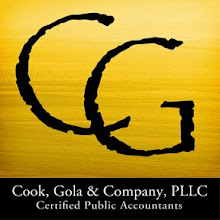The Coleman Report, which provides lenders with small business data, reported that in 2004 the number of SBA backed loans that failed was 2.4 percent. This rate increased to 8.7 percent in 2007 and again to 11.9 percent in 2008. During the 2008 reporting period, the SBA’s 7(a) and 504 programs approved 78,324 loans totaling $18.2 billion. If you “do the math,” this means a whopping 9,300 loans failed! The exact amount of dollars was unknown, but 11.9 percent of $18.2 billion is $2.17 billion.
These numbers will no doubt increase as the economy sputters along. The real questions are these:
o Why are small businesses failing at such an alarming rate?
o How can we fix the problem?
o When will the change occur?
Businesses fail for four primary reasons. It is impossible to determine which of these pitfalls is more significant than the other. The reason for failure can vary with each business situation. In our experience, one or more of the following four items can be tied to a small business obituary:
1. Decreasing Revenues – Revenues can decrease for a variety of reasons. Actual sales can decline. In today’s climate, however, sales volume may not be the root issue. Collections may be the real issue. To this, we would remind all of those that embrace the “sell ourselves out of the problem” management types that sales without collections are not sales.
2. Operational Deficiencies – When times are good and the profit margins are strong, operational deficiencies are often hidden or just overlooked. When times are tough, however, all of the ugly operational issues that were buried beneath a hefty profit margin will raise their head. A thorough analysis of the “back-end” of the business may reveal unused capacity, excess inventory, excess personnel, or all of the above.
3. Lack of Adequate Capital – As a practicing CPA of 25 years, the lack of adequate capital is usually the most significant issue confronting most small businesses. Most small businesses start with an idea and minimal capital. The company is anticipating and dependent upon turning a substantial profit from opening day. These funds are critical for developing adequate capital levels for future growth and, in many cases, cash to fund current production. The fact that 88% of the SBA loans are repaid indicates that this approach is possible; but the fact that 12% of the SBA loans fail indicate that this approach is high risk.
4. Lack of Credit – If the business doesn’t have capital, it had better have credit. The SBA generally offers banks an 80% guaranty. This basically assures banks (lenders) that their bad debt exposure will be minimal. The problem from the business’ perspective is that not all businesses will qualify of the SBA guaranty. In addition, SBA guaranteed loans come with a number of stifling restrictions which may not make an SBA guarantee an option for a growing operation.
So, how do we effectively fix these problems? The answer lies with your business model. All models begin with basic income and expense assumptions that are quantified and filter to a bottom line. It’s a start.
Your model must be based on reality. Reality is not what you want it to be, or what you hope it should be. Reality is what it is! One tongue in cheek measure is to build your model based on half your anticipated revenues and twice your anticipated expenses.
When aspiring entrepreneurs come to our offices to discuss their impending triumph, they inevitably produce a projected profit and loss. This is not a model - it is an estimate. Your model should include a process that takes your product from conception to the consumer. Your model must include processes that account for variables such as changes in sales volume, changes in raw material availability and costs, changes in market conditions, changes in available personnel, etc.
In short, you fix your problems by being prepared for them. Good preparation and planning will assist you in managing the changes as they occur. The government may change the SBA programs, the banks may change their lending habits and your market may change for uncontrollable reasons. Flexibility and adaptability will determine your survival rate.
Change is inevitable. Change is your friend. Adaptability to change is what gives you the edge on your competition. So don’t be afraid of change, embrace it. With the proper business model and uncompromising attention to the plan, change will be your ally.
If your business is exhibiting signs of failure, don’t think you are Superman. You are not! There are, however, key factors that will determine your success. You can be a well prepared entrepreneur, able to navigate the turbulent waters of Why, How, & When, if you recognize the issues that affect your business and prepare for both the best and worst.
Steve Cook is managing shareholder of Cook & Associates, PLLC, a firm with offices in San Antonio and San Marcos, Texas. The firm offers tax, assurance and consulting services.
Subscribe to:
Post Comments (Atom)



No comments:
Post a Comment